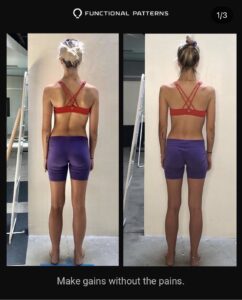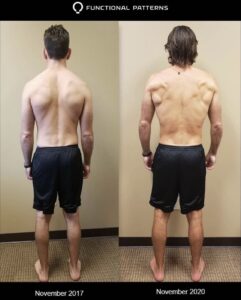Exercise can be bad when we go through the motions of our default movement patterns. We just pack on more muscle imbalance that causes a subconscious stress on our mental and physical state, affecting our physiology. Then we cope with drugs, alcohol, food, sex, whatever dopamine fix we need to temporarily feel better. We enter the cycle of trying to outwork our coping behavior and beating our body up in the process, but we can only do that for so long until we feel “old” because our habits caught up with us.
Taking a few steps back to heal our body with intentional movement might not feel or look like society’s idea of exercise but it starts to retrain our brain and body to function better, promoting muscle mass that is symmetrical and “balanced” to help us respond to stress better. Then when our muscles are in balance we’re consciously and subconsciously able to handle stress more efficiently- physically, mentally, emotionally, spiritually, etc. and then we don’t feel the need to cope. Then it comes time to break out of the habits that we developed from coping that we no longer need.
This behavior change is painful and uncomfortable but time well spent and can start seeing changes in weeks for little things, months for some bigger things, and sometimes years for habits we’ve built over our entire lives. This is the change that helps our physical health- from muscle strength, weight loss/ weight maintenance, hormone balance- which in turn helps our mental health like anxiety, mood, depression, and the ability to not have to cope the way we used to. And when we do need to cope we are able to be more aware of what we’re doing and why, and maybe not even coping the same way we did in the past because our stress response is improving.
This doesn’t mean you shouldn’t exercise, as most doctors and so called fitness experts will tell you that you need to eat less and move more to stay healthy. But if you move wrong and use your muscles in a state of imbalance then all of the above cataclysm of events happen- and that’s not healthy. You need to understand more about your body in order to make sure you behave in a way that promotes health. When you’re over exercising and under eating for so long, your body’s hormones get thrown out of whack and it makes it a lot harder to lose weight and body fat. You end up spinning your wheels trying to lose weight or build muscle but you’re fighting an uphill battle, up a water slide. When you learn to fix your muscle imbalances when you “exercise” instead of just going through the motions of various movements, you’ll be able to address the subconscious stress on your body- aligning your posture and your hormones. This equates to a healthier body inside and, most importantly, outside of the gym!
Contact our gym to learn how our team can help you start and sustain your journey to a healthier you!











